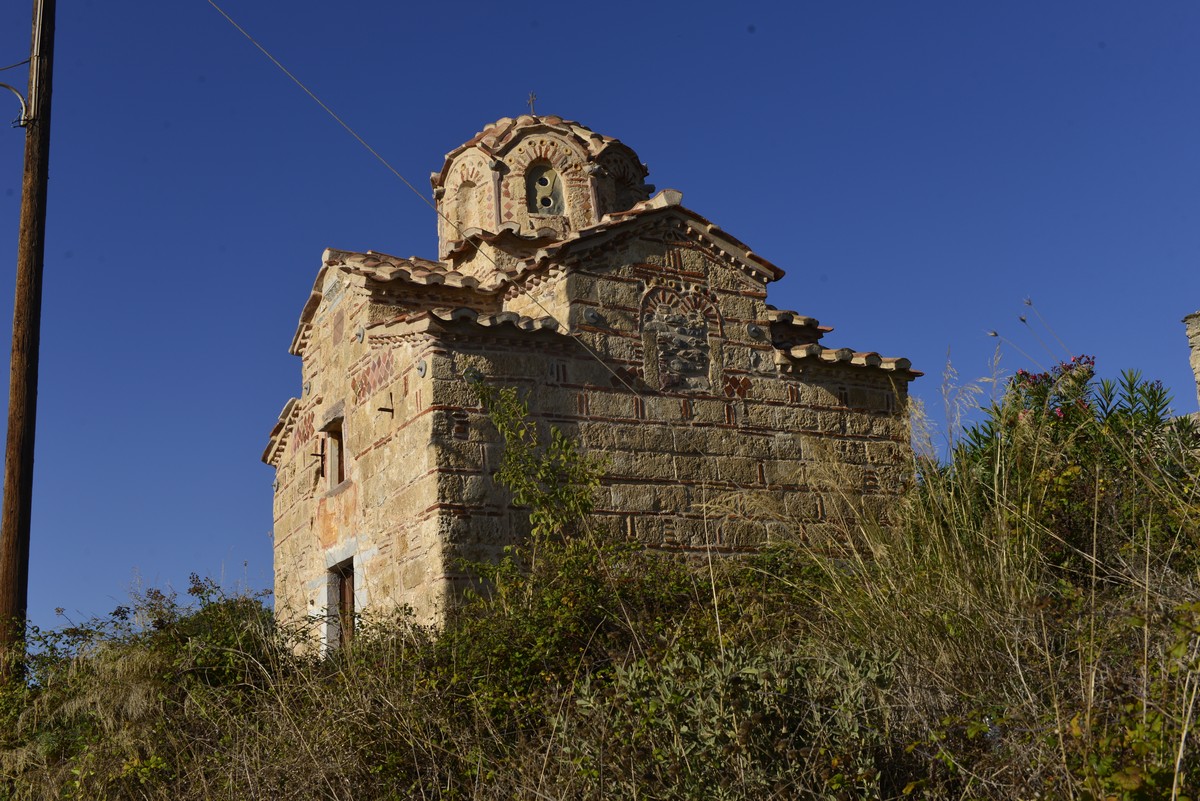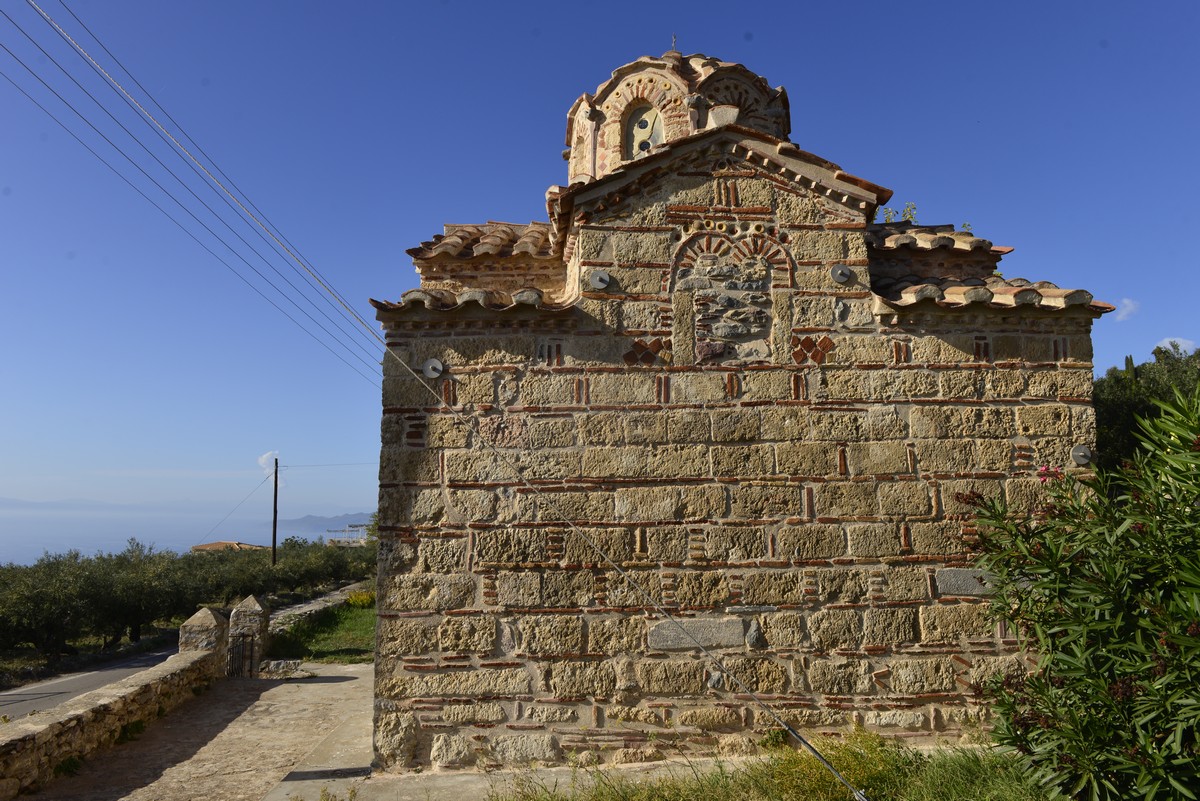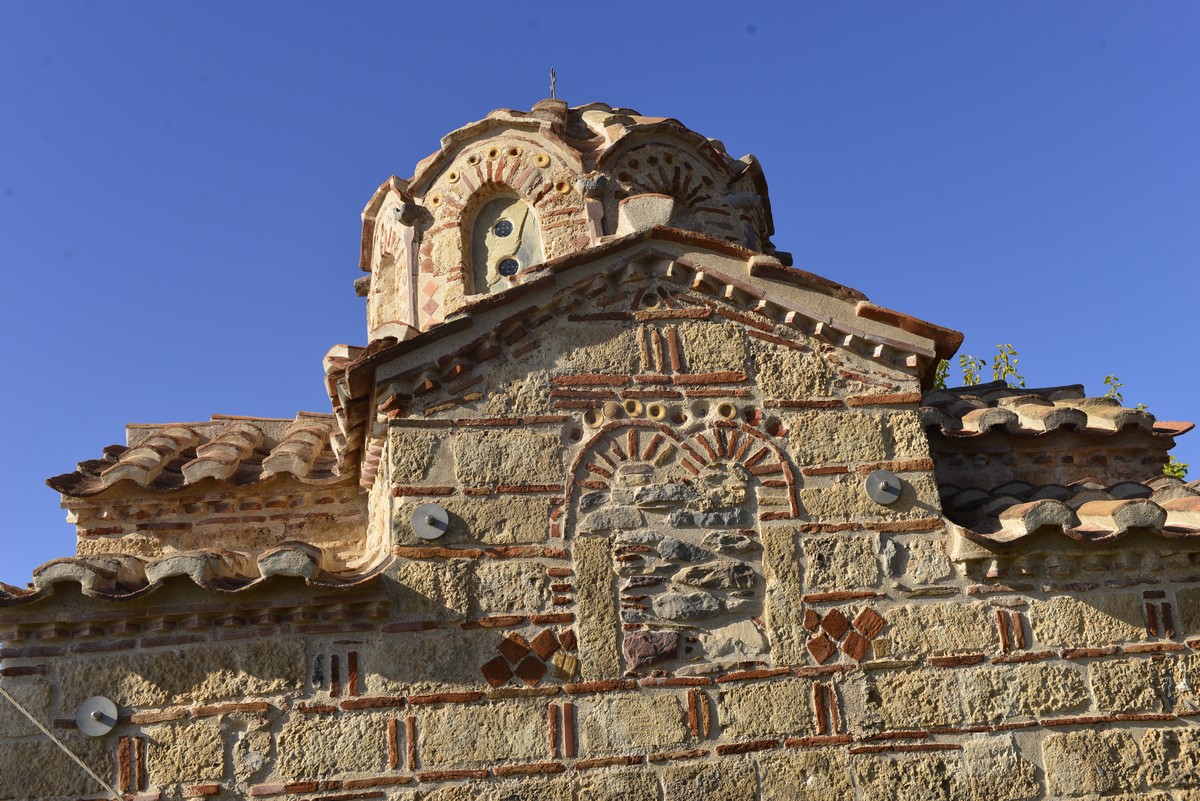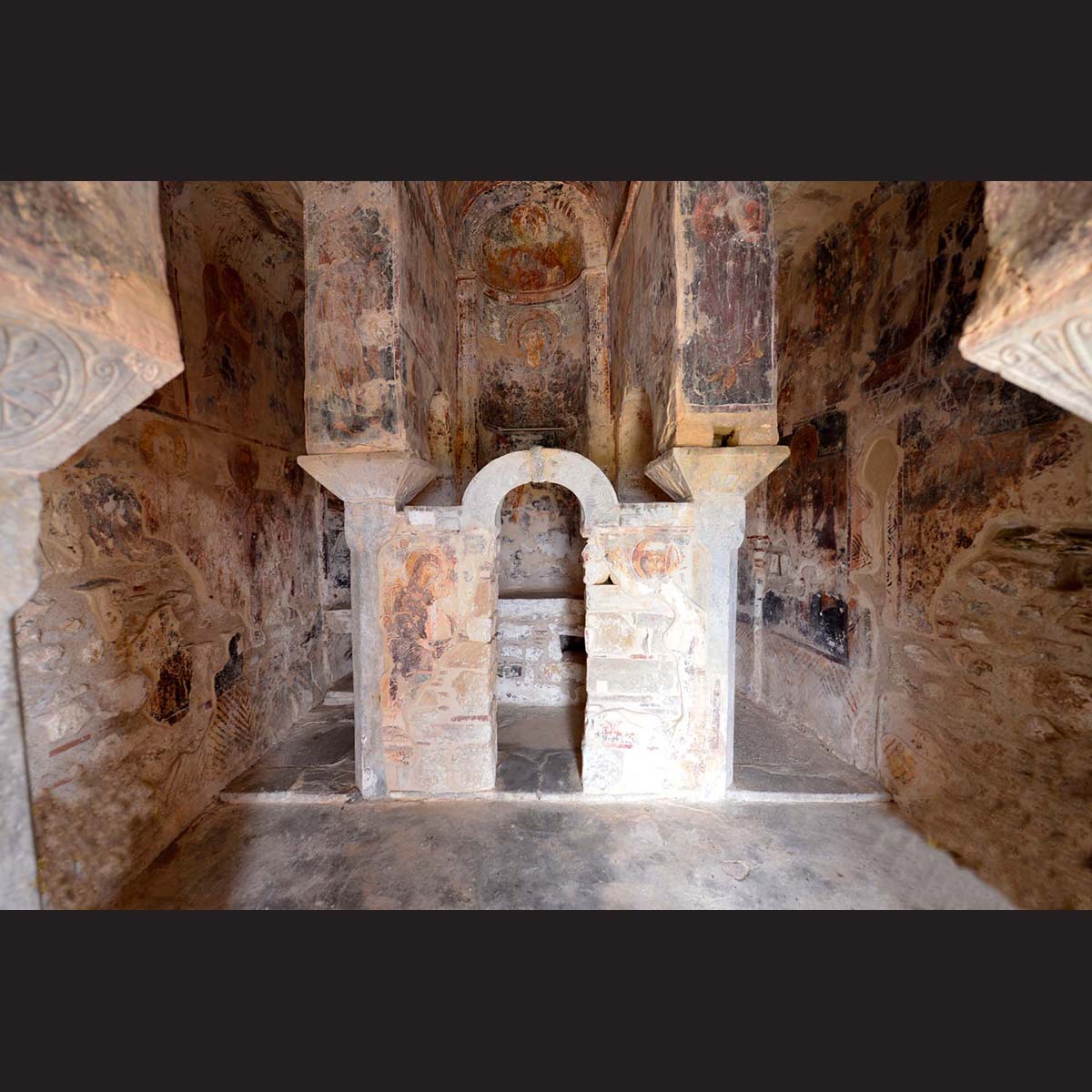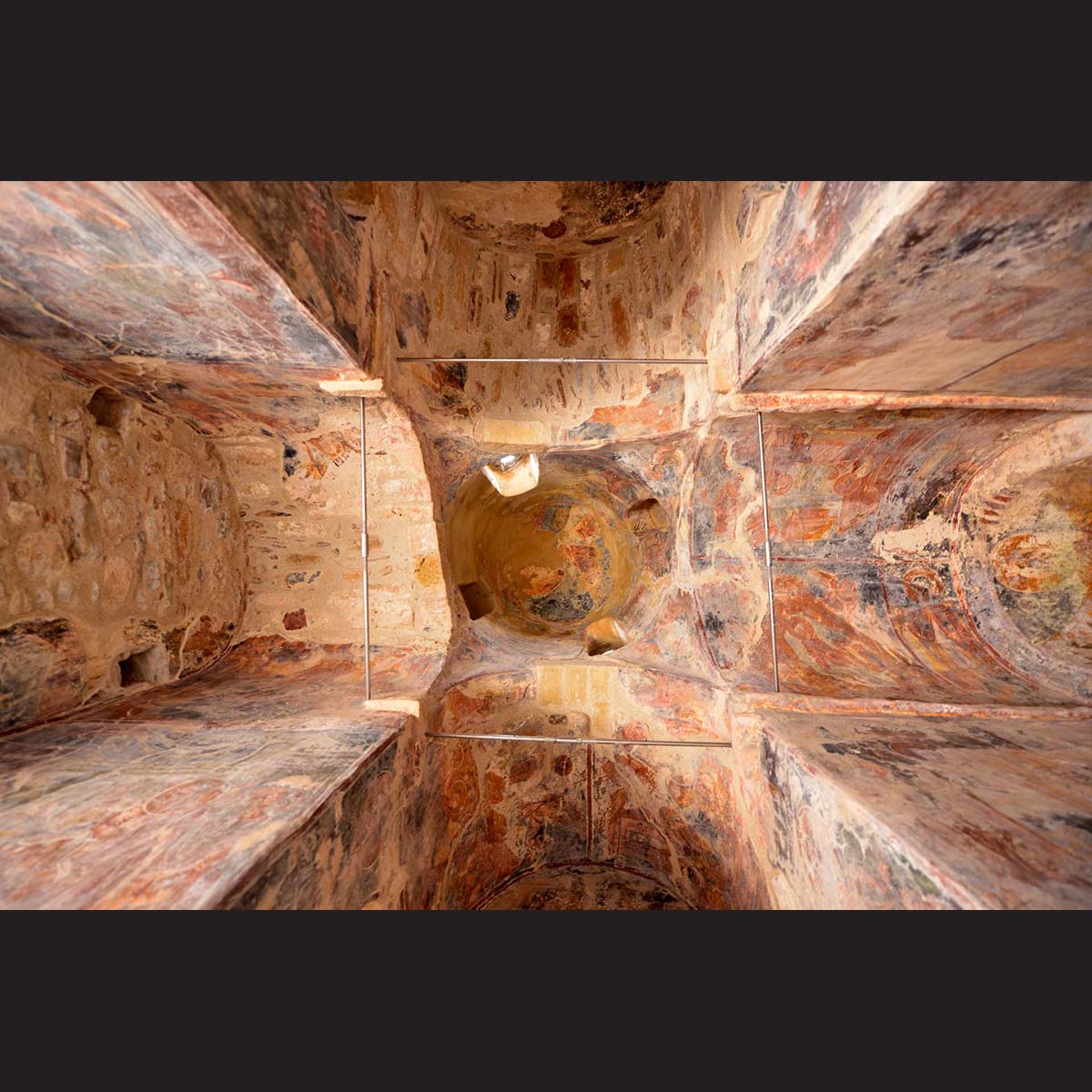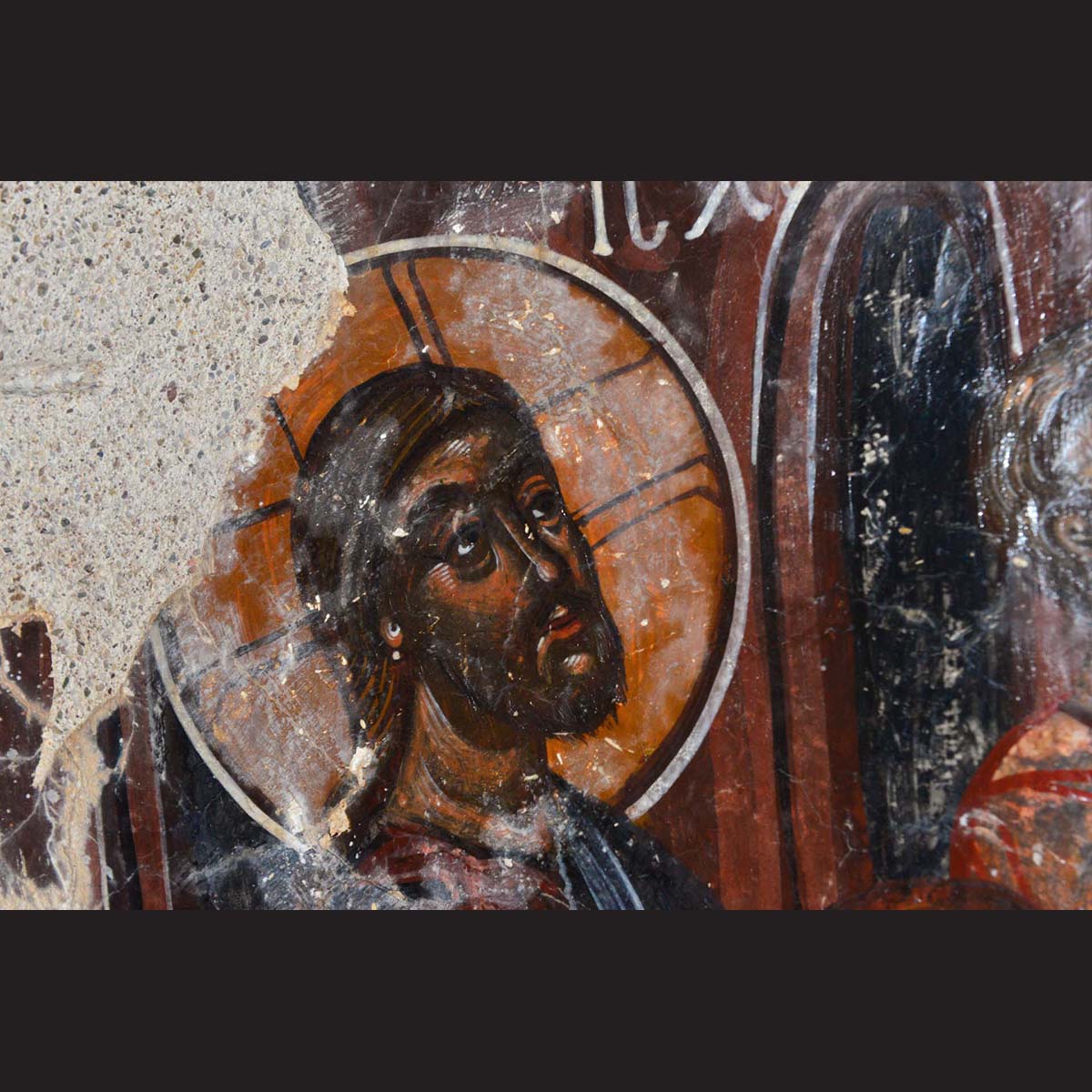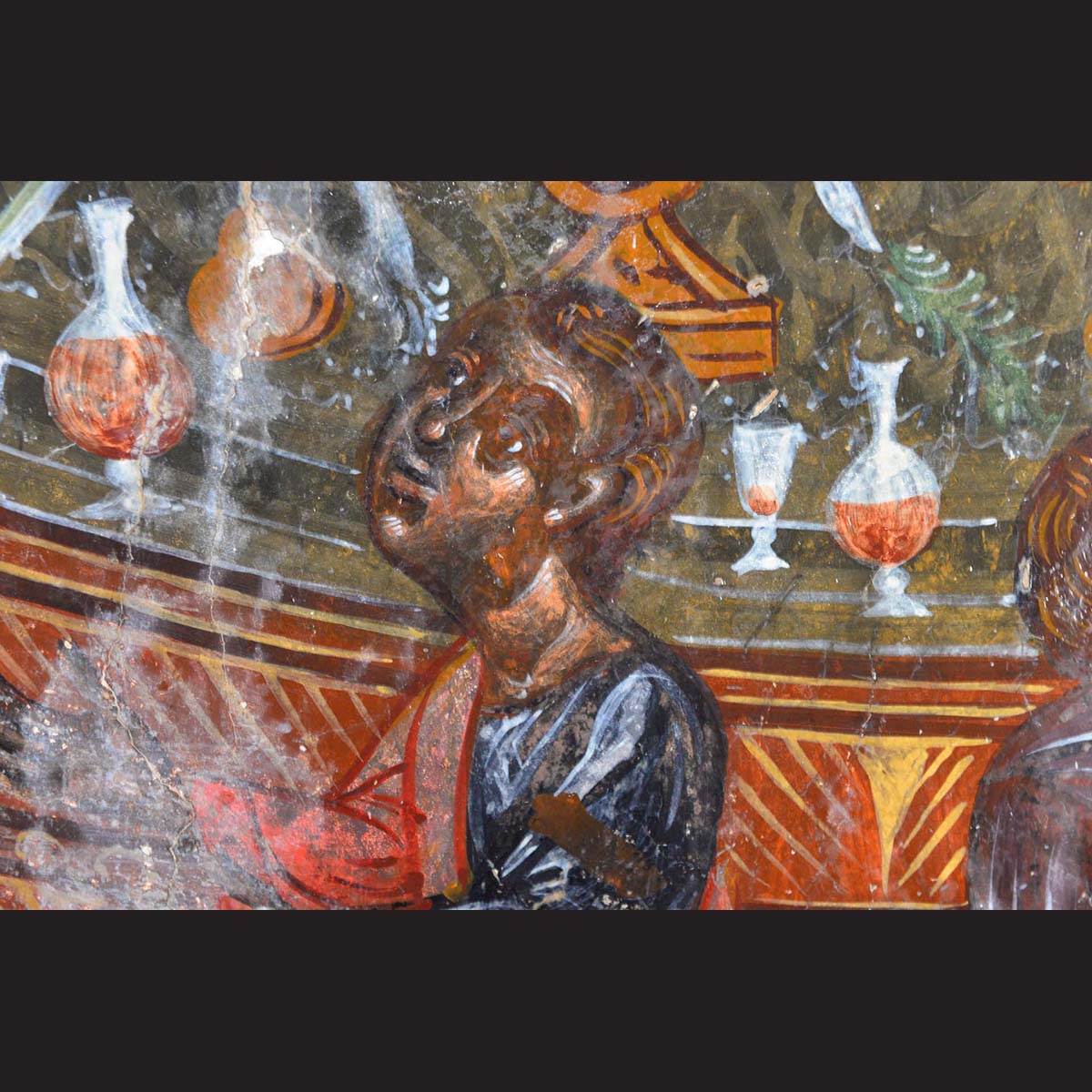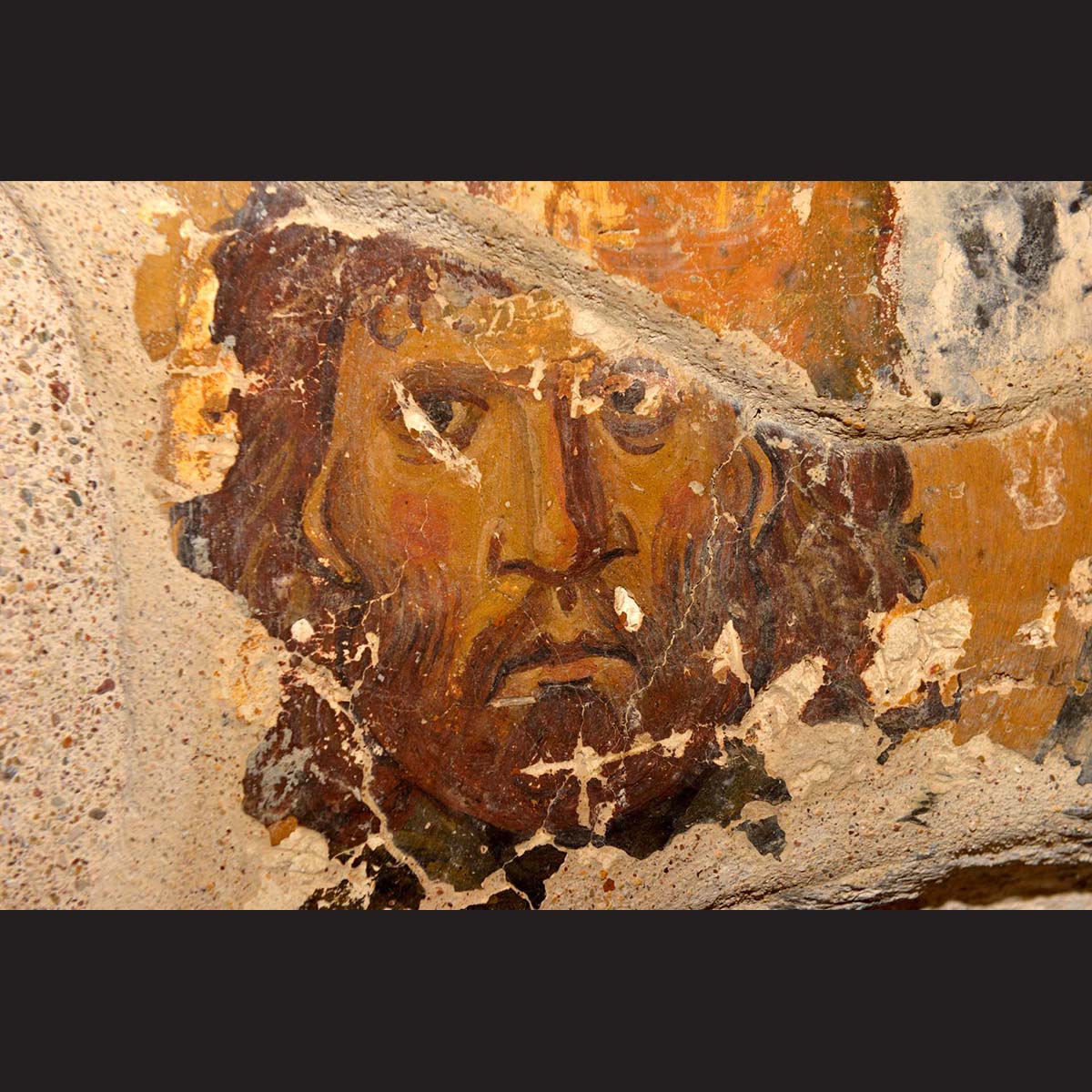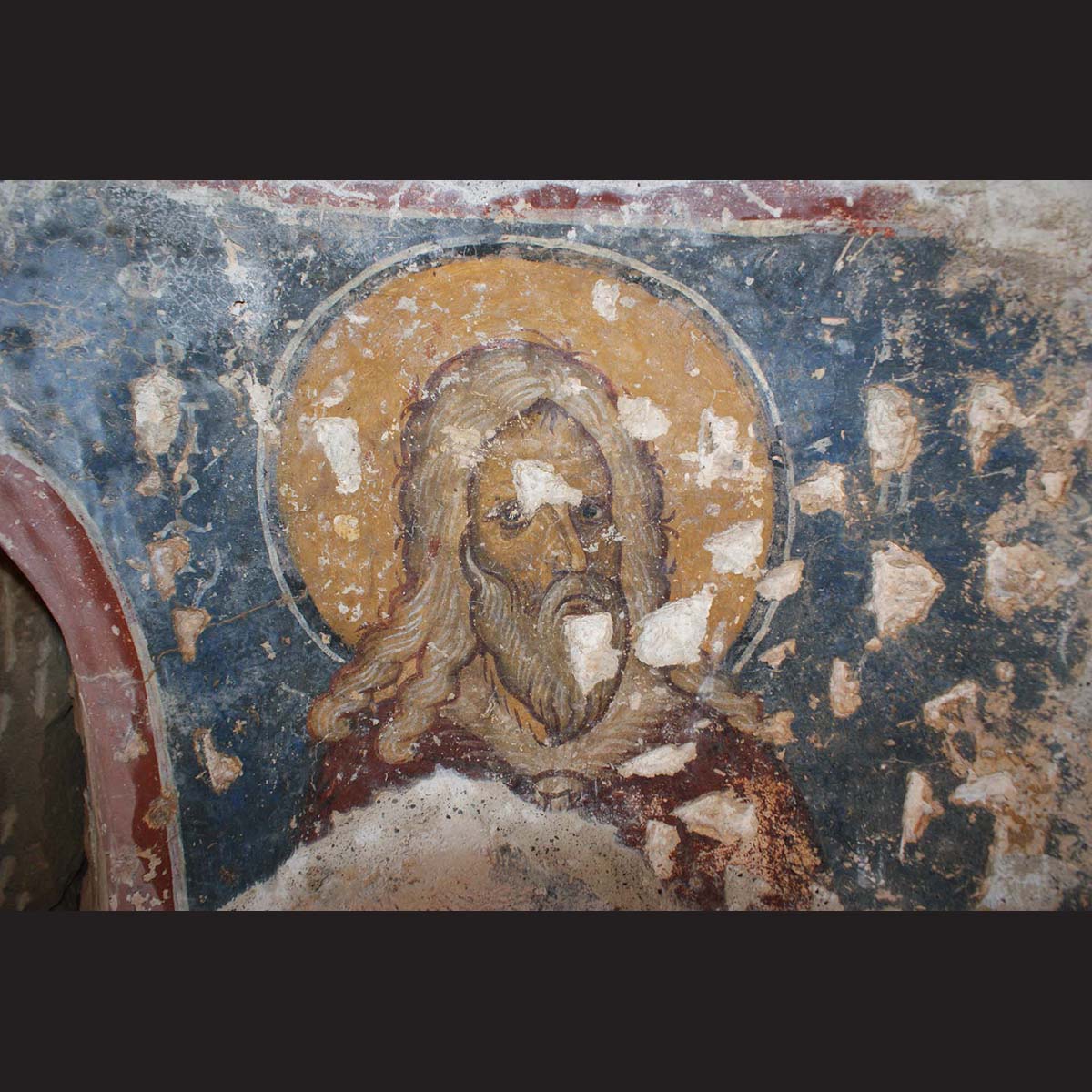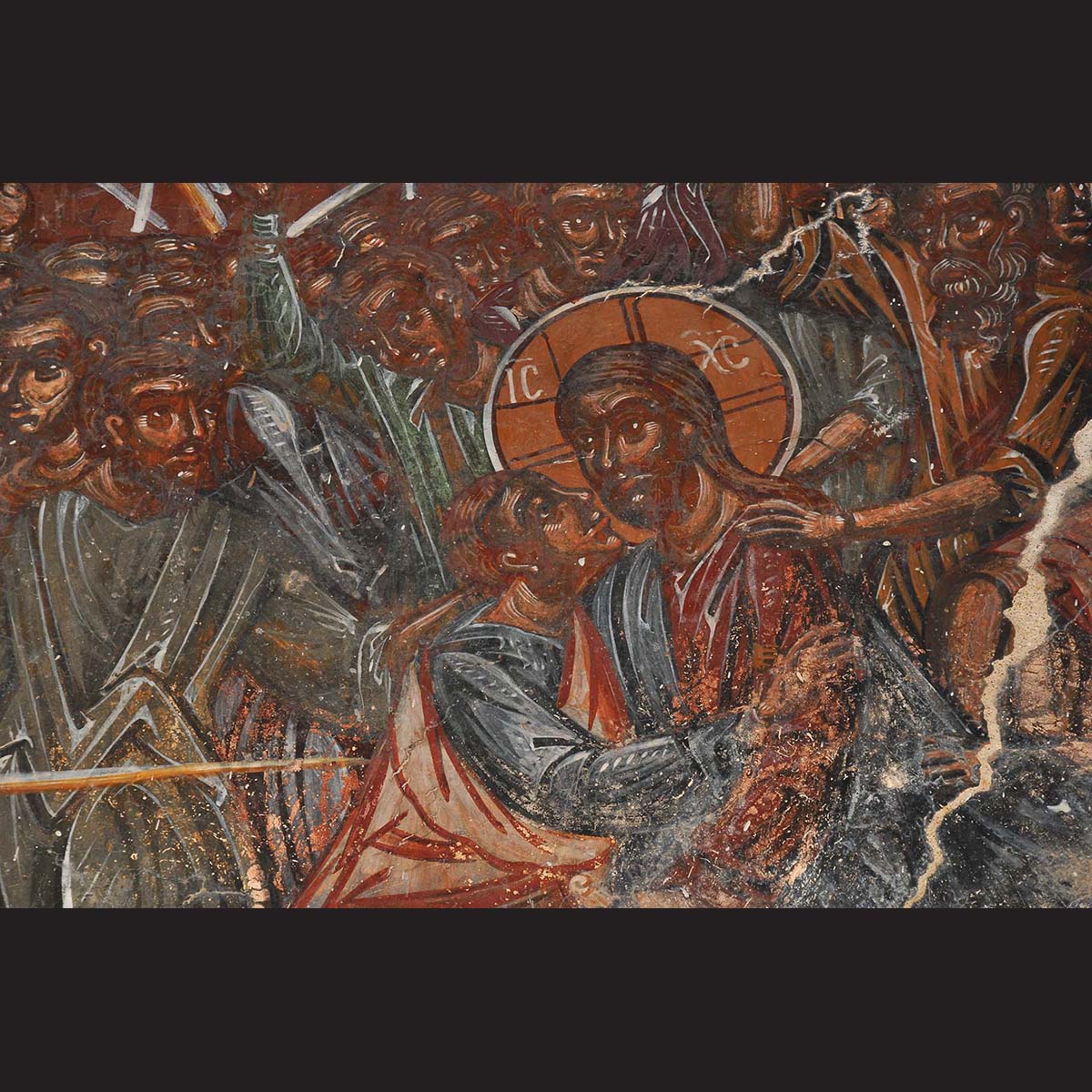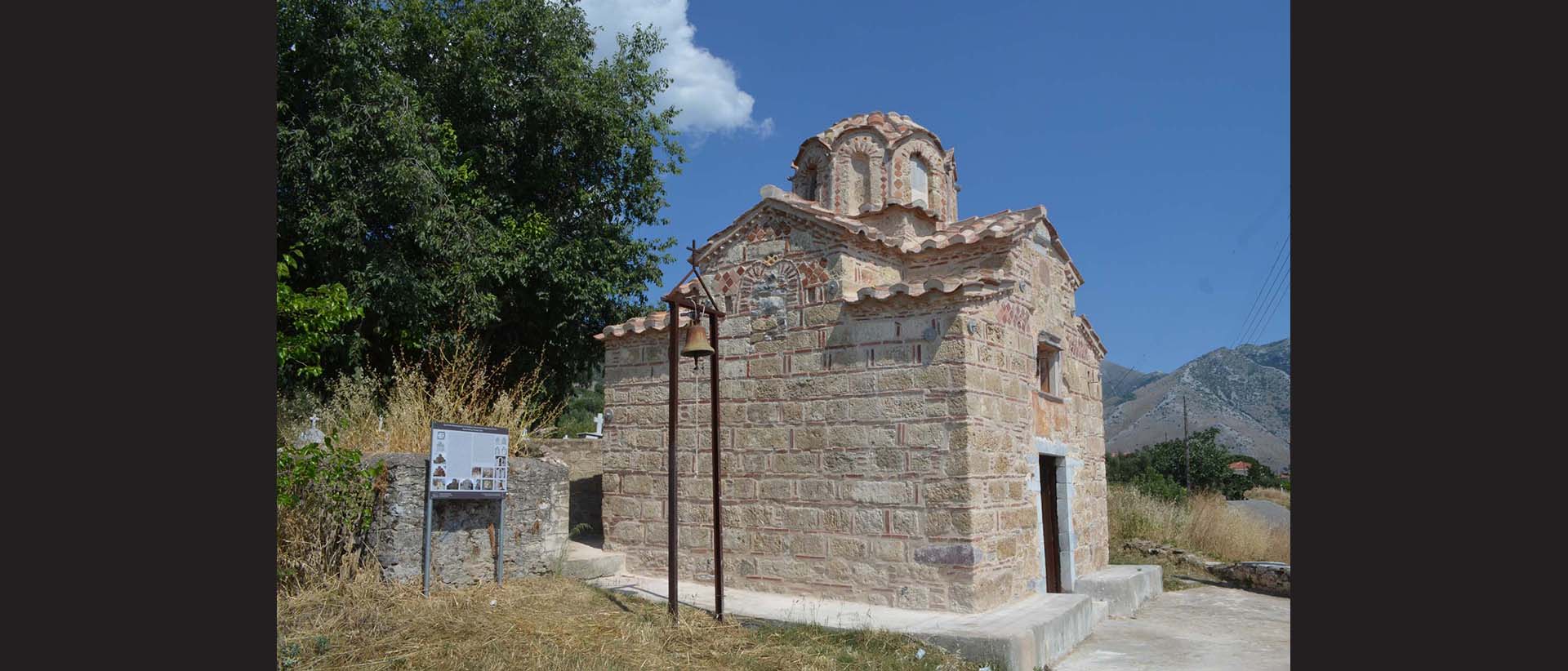
Metamorfosi Sotiros in Nomitsi

The church of the Transfiguration of Christ is one of the most elegant examples of Byzantine Architecture in the Mani Peninsula. It’s a cross-in-square domed church of the four-columned variant. At the east side of the building three apses are projecting for the arrangement of the Holy Alter. The church is built with carved porous stones and bricks, according to the so called cloisonné system, typical in byzantine architecture of southern Greece. The exterior surfaces of the building are elaborated with rich brick decoration. Noteworthy is the use of small terracotta vessels that are embedded in the masonry surrounding arches or adorning the building’s facets. The west façade of the church underwent an extensive reconstruction at the late 19th c., probably after an earthquake.
A substantial part of the sculptural decoration of the monument is almost intact, including the four columns and their capitals and the marble slab of the holy altar. The finest carved arched architrave, of the original templon screen, crowns today a masonry templon, which probably dated to the 18th c. A marble carved beam of the 11th c., originally placed at the west cross arm of the church, stolen almost twenty years ago by looters, was found recently already sold by Christie’s. After several actions of the Greek Ministry of Culture the stolen marble was repatriated in Messenia at 2014.
Three phases can be identified in the painted decoration of the church. The first layer, fragmentary preserved, dates back to the Byzantine period (early 13th c.). The interior is mostly covered by frescoes that have been dated by some scholars in the 15th-16th c., though a later date (first half of the 17th c.) seems more probable. A third, post-byzantine phase (18th c.) can be seen in the main conch of the altar and in the west side of the post-byzantine built templon.

